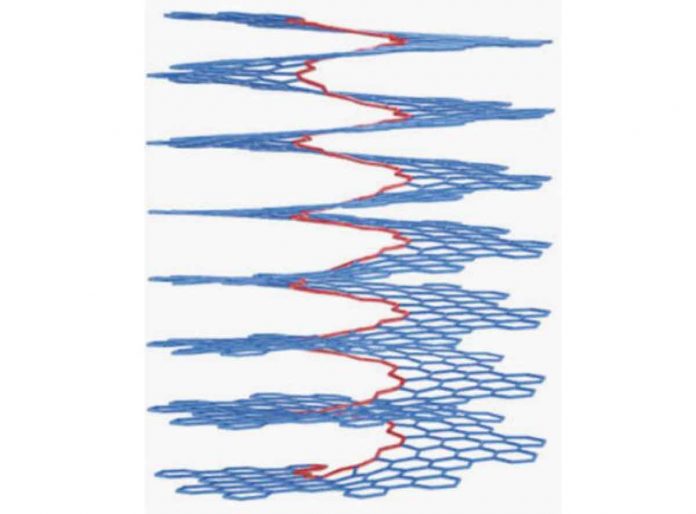Albert Einstein constructed equations of general relativity by adopting Riemann geometry. Riemann geometry has provided predictions for the properties of curved carbon materials, in addition to the key role it played in mathematics and physics. Synthesis of such complicated carbon materials with Riemann surfaces remains a great challenge.
The study was published Nature Communications. University of Science and Technology of China (USTC) of the Chinese Academy of Sciences scientists reported the synthesis of a π-extended nanographene carbon nanosolenoid (CNS) material. The material consisted of continuous spiral graphene planes. The CNS displayed special photoluminescence and magnetic properties.
Scientists first synthesized polyphenylene precursor (P1) through a Pd-mediated Suzuki coupling. Then they conducted a Scholl reaction as the cyclodehydrogenation step. They confirmed the existence of CNS by identifying changes in solid-state nuclear magnetic resonance (NMR) and Fourier transform infrared (FT-IR) spectrum between P1 and CNS.
CNS exhibited red-shifted emission band compared with P1, due to its extended π-conjugation. The lifetimes of P1 and CNS also differ as measured by the time resolved photoluminescence (TRPL) technique. It indicates the influence of large π-conjugation in CNS.
Conventional TEM would cause structural damage to CNS. Scientists adopted a low-dose integrated differential phase contrast scanning transmission electron microscopy (iDPC-STEM) and observed single-stranded CNS helix. The observed helical pitch and width well matched that of the calculation. Researchers then studied the magnetic and electronic properties of CNS.
As demonstrated by electron paramagnetic resonance (EPR) spectroscopy. It is a large number of radicaloids existed in CNS at room temperature. Superconducting quantum interference device (SQUID) magnetometry indicated a magnetization memory effect below 150 K. A large thermal hysteresis could be observed below 10 K as a result of breaking of π-electrons due to the helix structure.

